- Home
- Tom Clancy
Battle Ready Page 24
Battle Ready Read online
Page 24
Pretty soon a camera crew showed up. I tried to duck out and get back to our car, but it was no use. When they saw my general’s star, they had to ask me who I was and why I was here. I explained as best I could; but of course the embassy had their TVs on; and there was Zinni in Jerusalem where he was not supposed to be.
On the way back to Tel Aviv, I received a call from the embassy telling me to go right to the airport and leave. I notified our aircrew, picked up my gear, said a quick good-bye to the troops, and headed for the airfield.
Israel is the only country I’ve ever been thrown out of; but I couldn’t think of a better place other than Jerusalem to be at the moment the Persian Gulf War ended.
OPERATION PROVIDE COMFORT
Back in Stuttgart, the command was celebrating. And when I came in, so was our staff; they were elated but exhausted. The nearly yearlong twenty-four-hour manning of the CAT and the Battle Staff had drained all of us. Everybody in the EUCOM J-3 shop was just beaten . . . worn thin. And yet there was still a lot to do before we could shut down the Battle Staff and the CAT and get back to normal. We kept targeting a stand-down date, but it kept getting delayed.
Finally, on Friday, April 5, we came to the point when we thought we could actually shut it down.
There was one possible hang-up to that. A situation was developing on the Iraqi-Turkish border that merited concern (much of the following information we did not learn until later): Urged on by promises of U.S. military support (that subsequently was not provided), the Kurds had mounted a revolt against Saddam, which Saddam had brutally crushed. The Iraqi military had then pushed the panicked Kurds into the mountains along the Turkish border, slaughtering many in the process. Just about the entire Iraqi Kurdish population was involved in this exodus; hundreds of thousands of refugees were now pouring over the border, few carrying more than the clothes on their backs, all of them in dire straits. The Turks (who had had a bad previous experience with Kurdish refugees, and have a Kurdish problem of their own) refused to let the refugees down from the mountains; and the harsh winter conditions were threatening to devastate these traumatized masses.
Early on the fifth, we got a call to tell us that Secretary of State James Baker had become concerned about the refugees and wanted to take a firsthand look. (He was already in the region.) He flew into Turkey, and we provided him with a pair of Navy CH-53 helicopters to carry him out to the camps where the refugees had collected.
We were monitoring this developing situation, but it didn’t take up very many pixels on our screen.
Later that day, a call came from the Joint Staff at the Pentagon. “Maybe you ought to keep the CAT in place,” they advised us, “in case Baker wants to take some action.” So we were ready to keep the CAT going. But then they came back: “No, forget it. It’s no big deal. Baker’s gone up in the helicopters. Nothing much is going to come of it.”
That meant we could close down the CAT at last. “At the end of the workday—normal hours,” Snuffy Smith announced, “we’re going to shut down the CAT.” The exhausted staff was in heaven after two solid years of double duty.
Then Snuffy took me aside. “Get Debbie,” he said. “I’ll get Dotty”—his wife—“We’re going down to Pietro’s.” Pietro’s was a little Italian restaurant just outside the gate, one of our favorite places. “We’re going to have a big dinner and get shitfaced tonight. Have a good time and celebrate the end of all the crises.”
That sounded pretty good to me. In some very real ways, going out to Pietro’s was like getting released from prison. Not just because we’d been working hard. Security on the base had been iron tight. Except for flying off to do our jobs, we’d been locked in: German police had discovered terrorists observing General McCarthy’s house (located in a nice neighborhood in town where Americans had been living for a long time). This raised serious security fears. There had also been peace demonstrations, and some of the demonstrators had managed to get inside the base. The resulting precautions were necessary, but a burden: All the officers were issued .45s; and guards armed with machine guns had been placed all around the base.
This was going to be the first time we could just go out and relax since the war started (though we still had to have a security detail outside the gates).
Pietro, the owner, and everybody else at the restaurant were all delighted to see us; it had been a long time; everybody was laughing and in high spirits. There were mandolin players; and we sang along with them. We were enjoying a splendid Italian feast; Snuffy and I were drinking a lot of wine; and we were feeling really good.
All of a sudden, the door swung open and the colonel that runs our command center rushed in. “Sirs,” he told us, “you have to get back to the base right away. The director of operations at the Joint Staff wants to talk to you immediately. It looks like you need to launch an operation ASAP.”
“Holy shit,” I said to myself. It was the middle of the night, and we were feeling no pain; but we dropped everything, got our wives out of there, and hurried back to the command center.
When we called the director of operations, this is what we learned: Secretary Baker had spent the day observing the Kurdish refugees, and he was appalled. The refugee situation was developing into a terrible catastrophe. There were already tens of thousands of people collected in makeshift camps; and hundreds of thousands more were in the mountains moving in. Worse, the Kurdish authorities were pointing the finger at George Bush for encouraging them in their revolt. The Bush administration potentially had a lot of egg on its face. If something wasn’t done fast, things were going totally to hell.
We were ordered to have relief supplies on the ground in thirty-six hours.
This seemed like an impossible task, given the remote locations where the ravaged people had clustered and the lack of forces in position to react immediately; but we put our heads into the problem.
The first thing we did was call Jim Jamerson at USAFE to give him a heads-up: His guys had to rapidly develop a plan for a humanitarian airlift. Jamerson, who had just returned from commanding JTF Proven Force in southeast Turkey, instantly began piecing together a force to move back into position and conduct airdrops to the refugee sites. The mission would be organized very like Proven Force. Though he’d have a different mission and different kinds of airplanes, the structure and the staff control would be the same. And knowing the area was going to be a big plus. “We’ll need C-130s and helos to carry the stuff; and they will need escorts to fly with them. Where will we get all of that? Can we get enough parachute riggers? Where can we get the food?” We spent all that night trying to answer questions like these . . . and at the same time getting the CAT back up and running.
About halfway through all this scrambling, Snuffy said, “We’ve gotta call Galvin and tell him what we’re doing.”
“Yes, sir,” I said.
Then Snuffy looked hard at me. “Talk to me,” he said.
“What do you mean?”
“Go ahead, talk to me.”
So I tossed him a few words.
“I think you’re sober,” he laughed. “You call Galvin.”
I called General Galvin and told him what was going on.
The next day, Saturday, the sixth of April, after a rapid coordination effort with the Turkish government, Jim Jamerson moved his USAFE forces into bases in Turkey. On Sunday, U.S. Air Force transport planes, with air cover from our fighters, airdropped thirty-seven tons of supplies into the snow-covered mountain tent camps.
No one really believed that it could be done in thirty-six hours. But we got fired up, beat the thirty-six, and put the first airdrops on the ground, thanks to Jim Jamerson and his USAFE team.
By Monday, we were able to start looking at the longer-term needs of the mission. At first, it looked like the original mission would require about ten days’ worth of airdrops; but we realized very rapidly that the problem was going to be much bigger than that.
We initially concluded that given the force we had,
we could extend the immediate mission to provide thirty days of support, while we worked to get a better handle on the situation and came up with a longer-term solution. Parachute riggers from all the services were ordered to Incirlik Air Base in Turkey to set up a massive operation to package relief supplies for airdrops. The two CH-53 Navy helos that had carried Baker were ordered to remain to support the movement of the supplies.
Meanwhile, Dick Potter was sent to Turkey with his staff to form a Special Operations component. Potter had commanded the joint Special Operations task force under Proven Force. Now his mission was to get up in the mountains, make an assessment, and then get his SF (Special Forces) troops into the refugee camps, where they could do a great deal of good.
Once this emergency operation was under way, we began planning a more robust response.
What do we do? What do we need? We had no experience with refugees and humanitarian problems. They were all totally new to us. How do we craft a humanitarian operation? Already NGOs (nongovernmental organizations) were starting to head into the area. How do we deal with them? Obviously, somebody senior would have to go down to Turkey to handle that end. Who’d go? We knew we had to send more people down to Jim Jamerson. We also knew this wasn’t strictly an air operation. It would grow. But Jamerson’s organization was solely designed for air operations. It wasn’t going to be able to handle everything else we’d need down there. We’d need a full-blown joint operations center capable of dealing with ground troops, a humanitarian effort, the logistics, the UN, the NGOs, the Turks, and God only knows what else. We knew how to put together a Joint Operations Center, but we’d never done anything like the one this was shaping into.
We were doing all this planning fast and furious, trying to improvise with this unusual mission, when somebody came in and announced, “Sir, there are two Army captains out here. They say they need to see you.”
We were too wrapped up in the battle to make sense of the humanitarian task to listen to a couple of Army captains. “I can’t deal with them right now,” I said. “Maybe later.”
Finally, a few hours later, I took a break and went out to where they were waiting. They looked bright, eager, and enthusiastic. A good sign.
“Sir, we’re Captain Hess and Captain Elmo,” they said, introducing themselves. “We’re the EUCOM staff’s Civil Affairs guys.”
“Okay,” I said. “What have you got?”
“Sir, we know what to do in this humanitarian relief situation.”
“Oh, great,” I said to myself. I didn’t think anybody in the world could help with this thing. It was all just totally new. But I didn’t want to send them away, either, just in case. And I did like their enthusiasm. “Well, I don’t have time for any long discussions,” I said.
“Sir, we really ought to brief you,” they said. “You need to hear what we have.”
“Okay,” I said, feeling I’d taken enough of a break and needed to get back into the Op Center, “but give me a minute.”
Later, I found a few extra minutes and was able to give the captains a listen. But after they started throwing at me what they could provide, I suddenly realized that they did have something—most of the answers to the questions we’d been breaking our heads over. They had practical solutions for all the operations we were trying to design out of our brains from scratch. They knew what was required in terms of food, shelter, housing; they knew how to set up health-care facilities; they knew how to set up combined civil-military operations centers; they knew how to deal with NGOs and the UN; they knew how to process refugees; and they knew how to organize and staff all this.
“You’ve got to brief Admiral Smith,” I told them.
But when I went to Snuffy, he pushed me off: “I just don’t have time for these guys . . . later. I’ll deal with them later.”
“No, sir,” I said. “You’ve got to hear them now. These guys have got the answer.”
“Okay, bring them in,” he said, with visible skepticism. But his hesitation didn’t last long. “Where the hell have you guys been all day?” he told them when they’d finished.
We took them on then and there, and by the end of the day (Monday) we had a plan. Later, we brought them with us into Turkey, and they were indispensable in getting the operation going and moving it forward.
WITH THE help of Captains Hess and Elmo, we designed a joint task force to fill out Jim Jamerson’s operation. Its initial priority was to stabilize the refugees in the mountain camps. Late Monday afternoon, the decision was made to send me to Turkey to function as Jamerson’s deputy. Since I’d been in on the planning, I’d be better able than anybody else to get the JTF off the ground and then to make an assessment of how all of it was working.
“You’re just going down there for a week to ten days,” Snuffy told me. “That’s all. You’ll stand up these things, make an assessment, see what’s needed, and come back.”
I left for Turkey the next day.
Seven months later, I came back.
The operation was named “Provide Comfort.”
MY FIRST order of business as Jim Jamerson’s deputy was to set up a Joint Operations Center at Incirlik that turned his predominantly Air Force command into a joint task force.
I brought with me a few key people from the J-3 staff who physically set up the Joint Operations Center. They took care of all the necessary nuts and bolts—the communications, the internal systems, the planning; and they began to make the assessment of what else we needed.
My next order of business was to connect with Dick Potter, who was just getting out in the field, and see what was going on out there.
My first visit to the camps via one of Potter’s MH-53 helos was a shock. In fact, to call the forty-three locations where the refugees had massed “camps” was a real stretch. We had over 500,000 refugees strewn over freezing, desolate hilltops, all with desperate looks on their faces. Most had come with little to help them survive in the snow. Many were city or town dwellers with no experience living in the wild. Nobody had enough clothes to keep warm; everybody was shivering and shaking, not only from the cold but from hunger. Everybody was desperate for food. Children were dying. Mothers were scraping out little graves.
When our two CH-53s made their first lifts of food into the camps, they were swarmed by panicked mothers who desperately threw their babies onto the choppers. (The Kurds were incredibly fertile. We learned later that seventy percent of Kurdish women of childbearing age were pregnant. Infant mortality was high.)
The brutal slaughter along the way by Saddam’s troops had only added to their trauma.
The Turkish military had been doing all they could to provide order and security (I have to hand it to them), and they were also providing food, medicine, and shelter, but far from enough to begin to cover what the refugees needed for survival. More important, the Turks were insistent that the Iraqi Kurds remain close to the border (even when that resulted in many deaths from exposure), forcibly preventing them from coming down the mountains into Turkey. In their eyes, the refugees were an Iraqi problem and not a Turkish problem . . . and they did not want to add the Iraqi Kurds to the problems they already had with their own Kurdish population.44
It did not take Dick Potter long to realize the magnitude of the potential humanitarian disaster we faced. He had originally gone in with a single battalion from the 10th Special Forces Group (commanded by Colonel Bill Tangney45); but early that first week he requested that the entire 10th Group (two additional battalions) be sent into the camps to stabilize these sites. His request was immediately granted; and the rest of the group had begun to ar- rive by the end of the week. This act saved tens of thousands of lives. Though more than 10,000 people perished in the flight from Iraq and later in the camps, this number would have been far larger had the relief effort not have been accomplished so swiftly. The efforts of the 10th Special Forces Group was the most significant contribution to that effort.46
Another pressing order of business was to learn as
much as I could about these people: I had never heard of the Kurds before this operation. Fortunately, a U.S. Army intelligence officer, Nelgun Nesbit, who had grown up in Turkey before immigrating to the U.S., was available to fill in our ignorance; she was with us giving expert advice from very early in the mission. Her language capability and knowledge of the Kurds proved invaluable. Nell provided much of the information that we based our planning on. (She later went on to become a colonel in the Army.)
Nell was assertive, self-confident, and knew her own mind. She did not blindly follow the party line, which tended to upset the traditionalists; but I liked her. She got things done.
The point she repeatedly emphasized: We didn’t understand how the Kurds’ social system worked. As a consequence, we were trying to connect with them in ways that didn’t match their culture . . . picking the wrong people to deal with (a fact that I had already started to realize).
In the camps, we initially tried to connect with people we’d have normally linked up with—the ones who spoke English, the doctors, the lawyers, the teachers, the Western-educated. Many of these types came forward and curried our favor, but nothing was coming out of it. So then we looked for the political leadership—the mayors, the provincial executives. Still nothing was happening.
Nell Nesbit made it plain that we had to forget all of that Western thinking and reach out to the tribal chiefs (the Kurds are a tribal society) and figure out how the tribes were structured.
She brought in a Kurdish schoolteacher who answered my questions about social structure and decision making by mapping out the Kurdish tribal and political structures: how Kurds do things, who makes the decisions in the society. These were important issues for us as we tried to determine who were the actual leaders in the camps.

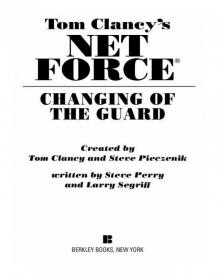 Changing of the Guard
Changing of the Guard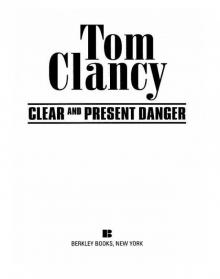 Clear and Present Danger
Clear and Present Danger Hounds of Rome
Hounds of Rome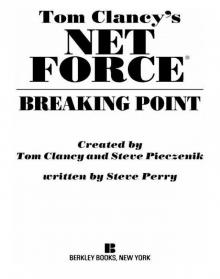 Breaking Point
Breaking Point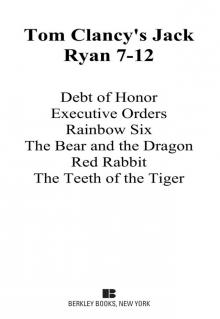 Tom Clancy's Jack Ryan Books 7-12
Tom Clancy's Jack Ryan Books 7-12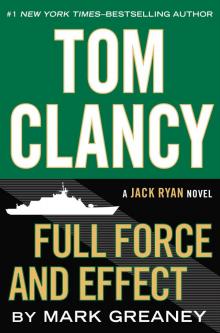 Full Force and Effect
Full Force and Effect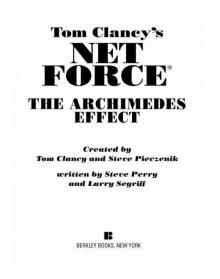 The Archimedes Effect
The Archimedes Effect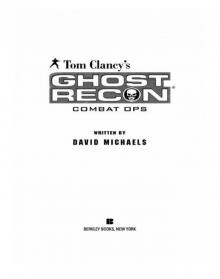 Combat Ops
Combat Ops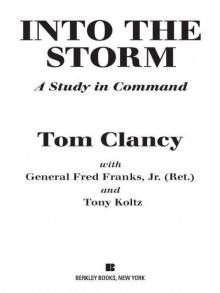 Into the Storm: On the Ground in Iraq
Into the Storm: On the Ground in Iraq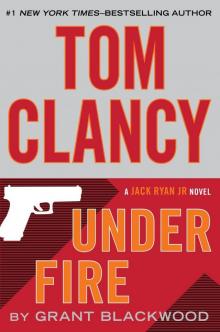 Under Fire
Under Fire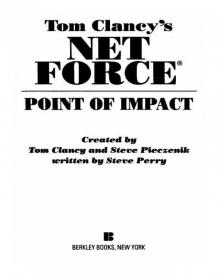 Point of Impact
Point of Impact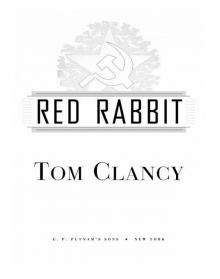 Red Rabbit
Red Rabbit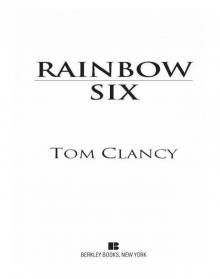 Rainbow Six
Rainbow Six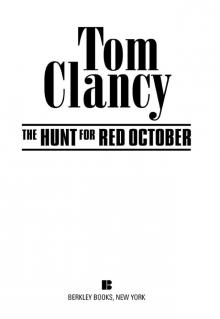 The Hunt for Red October
The Hunt for Red October The Teeth of the Tiger
The Teeth of the Tiger Conviction (2009)
Conviction (2009)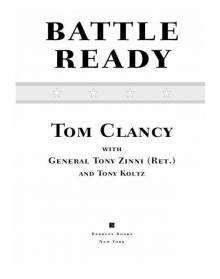 Battle Ready
Battle Ready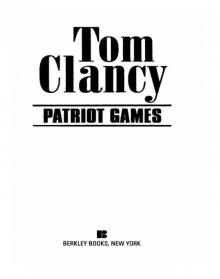 Patriot Games
Patriot Games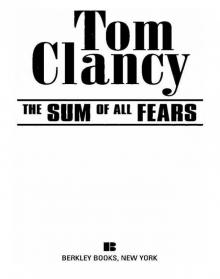 The Sum of All Fears
The Sum of All Fears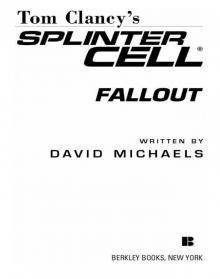 Fallout (2007)
Fallout (2007)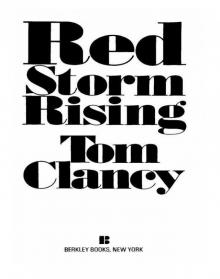 Red Storm Rising
Red Storm Rising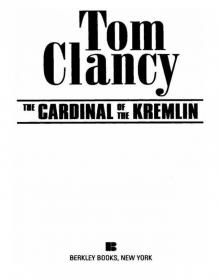 The Cardinal of the Kremlin
The Cardinal of the Kremlin Executive Orders
Executive Orders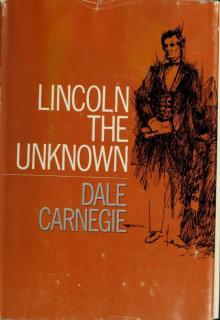 Lincoln, the unknown
Lincoln, the unknown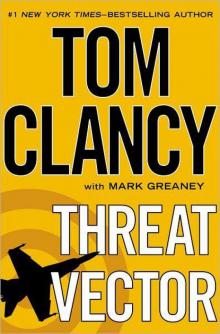 Threat Vector
Threat Vector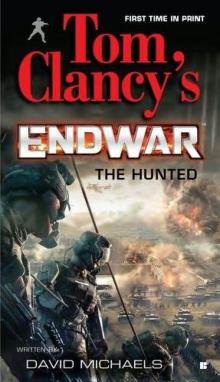 The Hunted
The Hunted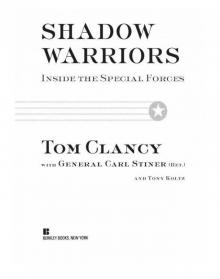 Shadow Warriors: Inside the Special Forces
Shadow Warriors: Inside the Special Forces End Game
End Game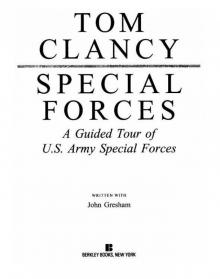 Special Forces: A Guided Tour of U.S. Army Special Forces
Special Forces: A Guided Tour of U.S. Army Special Forces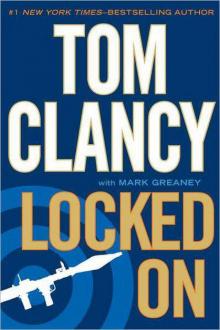 Locked On
Locked On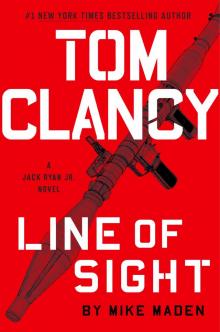 Line of Sight
Line of Sight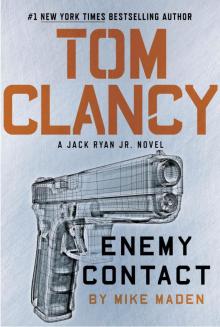 Tom Clancy Enemy Contact - Mike Maden
Tom Clancy Enemy Contact - Mike Maden Fighter Wing: A Guided Tour of an Air Force Combat Wing
Fighter Wing: A Guided Tour of an Air Force Combat Wing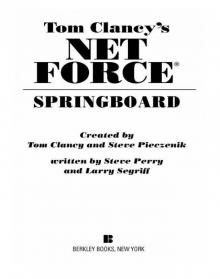 Springboard
Springboard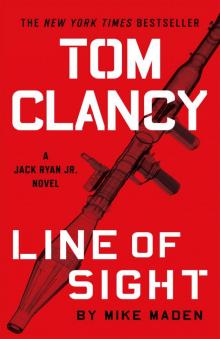 Line of Sight - Mike Maden
Line of Sight - Mike Maden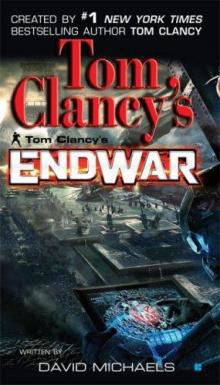 EndWar
EndWar Dead or Alive
Dead or Alive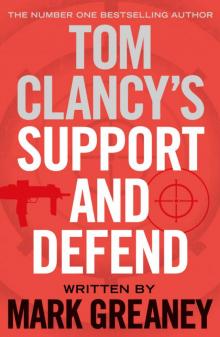 Tom Clancy Support and Defend
Tom Clancy Support and Defend Checkmate
Checkmate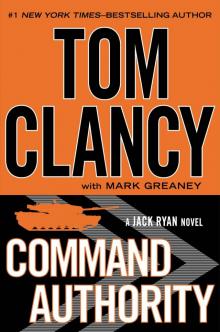 Command Authority
Command Authority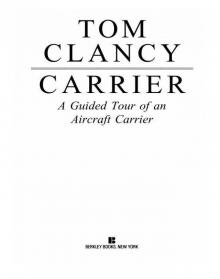 Carrier: A Guided Tour of an Aircraft Carrier
Carrier: A Guided Tour of an Aircraft Carrier Blacklist Aftermath
Blacklist Aftermath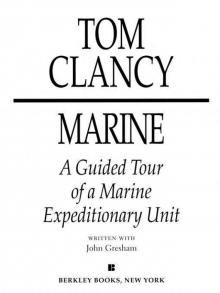 Marine: A Guided Tour of a Marine Expeditionary Unit
Marine: A Guided Tour of a Marine Expeditionary Unit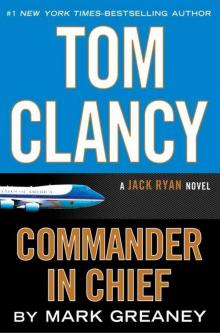 Commander-In-Chief
Commander-In-Chief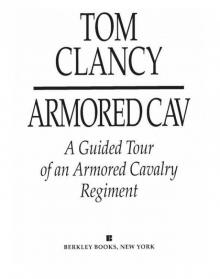 Armored Cav: A Guided Tour of an Armored Cavalry Regiment
Armored Cav: A Guided Tour of an Armored Cavalry Regiment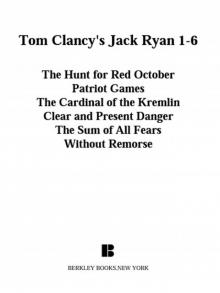 Tom Clancy's Jack Ryan Books 1-6
Tom Clancy's Jack Ryan Books 1-6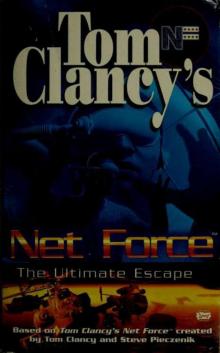 The Ultimate Escape
The Ultimate Escape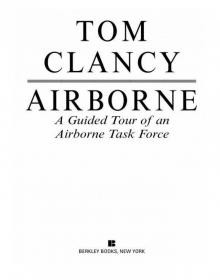 Airborne: A Guided Tour of an Airborne Task Force
Airborne: A Guided Tour of an Airborne Task Force Debt of Honor
Debt of Honor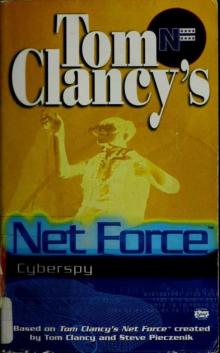 Cyberspy
Cyberspy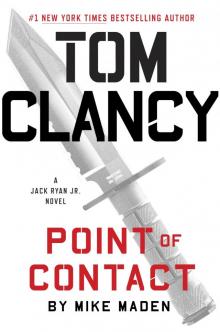 Point of Contact
Point of Contact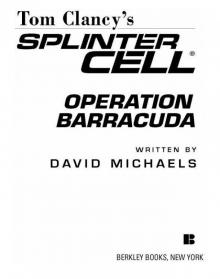 Operation Barracuda (2005)
Operation Barracuda (2005)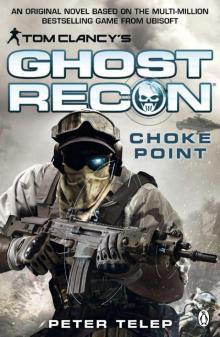 Choke Point
Choke Point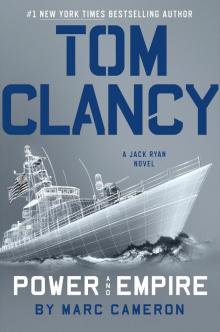 Power and Empire
Power and Empire Every Man a Tiger: The Gulf War Air Campaign
Every Man a Tiger: The Gulf War Air Campaign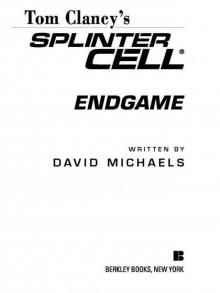 Endgame (1998)
Endgame (1998)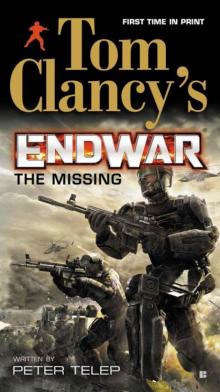 EndWar: The Missing
EndWar: The Missing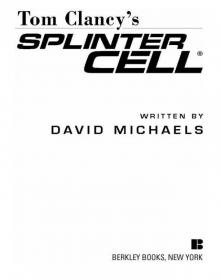 Splinter Cell (2004)
Splinter Cell (2004)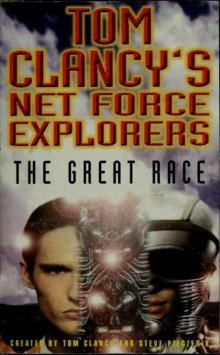 The Great Race
The Great Race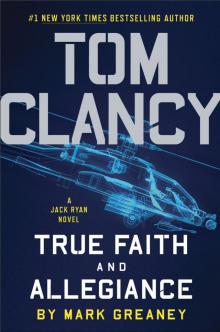 True Faith and Allegiance
True Faith and Allegiance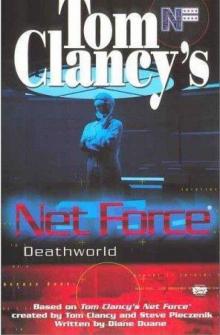 Deathworld
Deathworld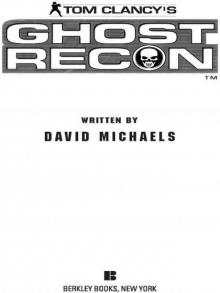 Ghost Recon (2008)
Ghost Recon (2008)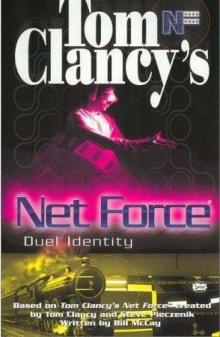 Duel Identity
Duel Identity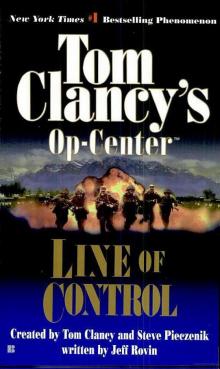 Line of Control o-8
Line of Control o-8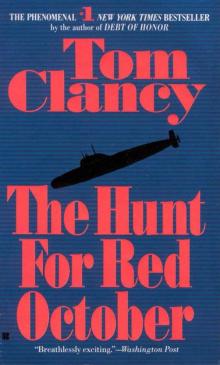 The Hunt for Red October jr-3
The Hunt for Red October jr-3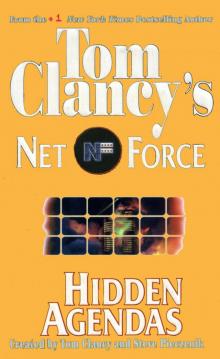 Hidden Agendas nf-2
Hidden Agendas nf-2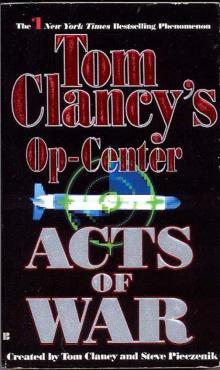 Acts of War oc-4
Acts of War oc-4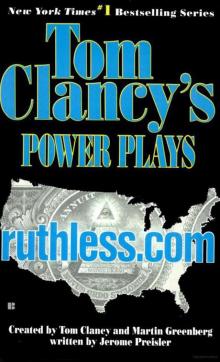 Ruthless.Com pp-2
Ruthless.Com pp-2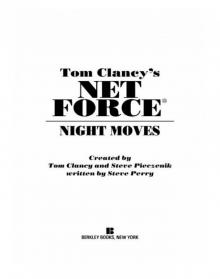 Night Moves
Night Moves The Hounds of Rome - Mystery of a Fugitive Priest
The Hounds of Rome - Mystery of a Fugitive Priest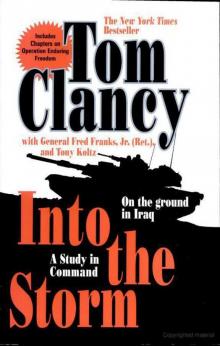 Into the Storm: On the Ground in Iraq sic-1
Into the Storm: On the Ground in Iraq sic-1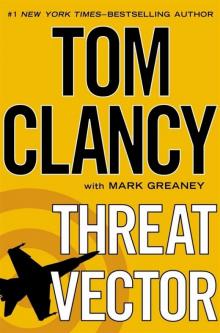 Threat Vector jrj-4
Threat Vector jrj-4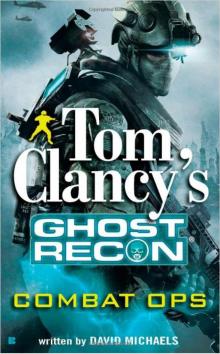 Combat Ops gr-2
Combat Ops gr-2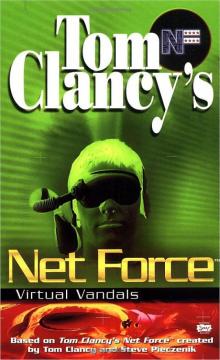 Virtual Vandals nfe-1
Virtual Vandals nfe-1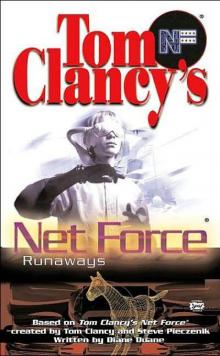 Runaways nfe-16
Runaways nfe-16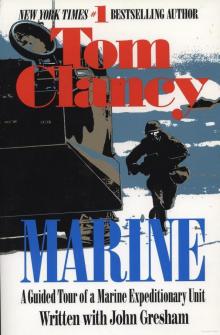 Marine: A Guided Tour of a Marine Expeditionary Unit tcml-4
Marine: A Guided Tour of a Marine Expeditionary Unit tcml-4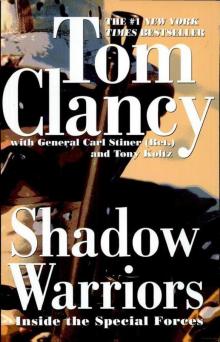 Shadow Warriors: Inside the Special Forces sic-3
Shadow Warriors: Inside the Special Forces sic-3 Jack Ryan Books 1-6
Jack Ryan Books 1-6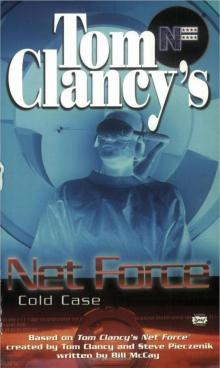 Cold Case nfe-15
Cold Case nfe-15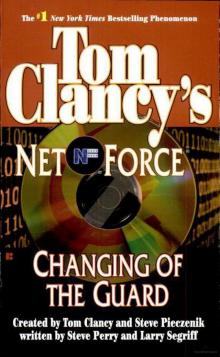 Changing of the Guard nf-8
Changing of the Guard nf-8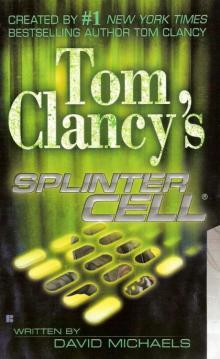 Splinter Cell sc-1
Splinter Cell sc-1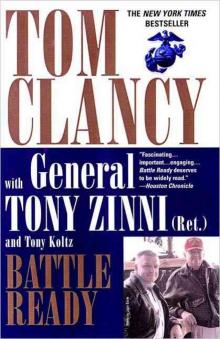 Battle Ready sic-4
Battle Ready sic-4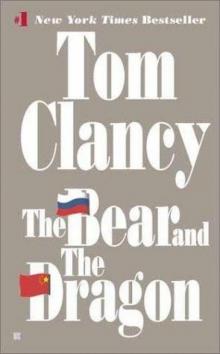 The Bear and the Dragon jrao-11
The Bear and the Dragon jrao-11 Fighter Wing: A Guided Tour of an Air Force Combat Wing tcml-3
Fighter Wing: A Guided Tour of an Air Force Combat Wing tcml-3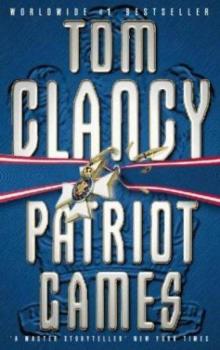 Patriot Games jr-1
Patriot Games jr-1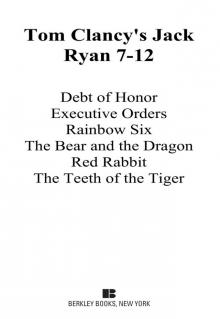 Jack Ryan Books 7-12
Jack Ryan Books 7-12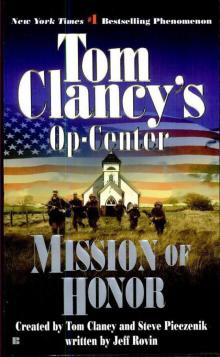 Mission of Honor o-9
Mission of Honor o-9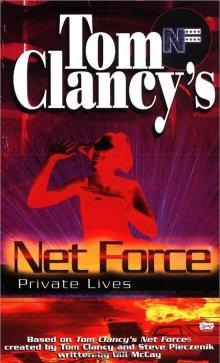 Private Lives nfe-9
Private Lives nfe-9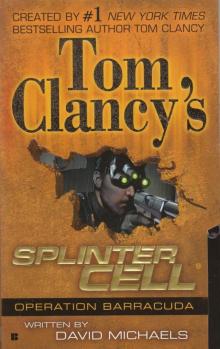 Operation Barracuda sc-2
Operation Barracuda sc-2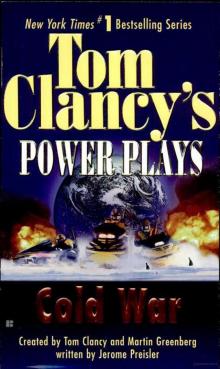 Cold War pp-5
Cold War pp-5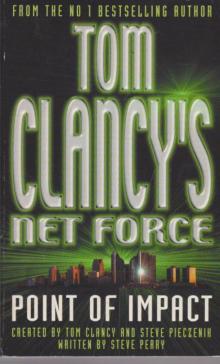 Point of Impact nf-5
Point of Impact nf-5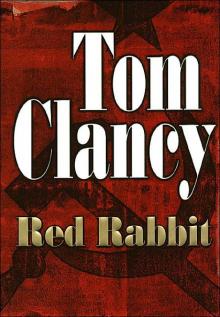 Red Rabbit jr-9
Red Rabbit jr-9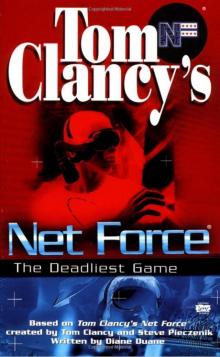 The Deadliest Game nfe-2
The Deadliest Game nfe-2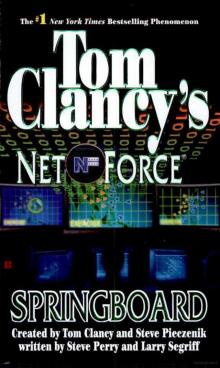 Springboard nf-9
Springboard nf-9 Safe House nfe-10
Safe House nfe-10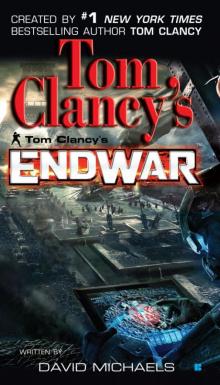 EndWar e-1
EndWar e-1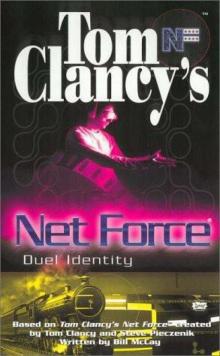 Duel Identity nfe-12
Duel Identity nfe-12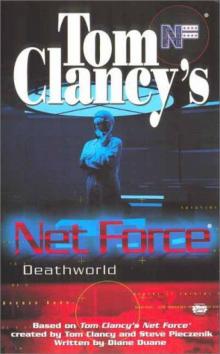 Deathworld nfe-13
Deathworld nfe-13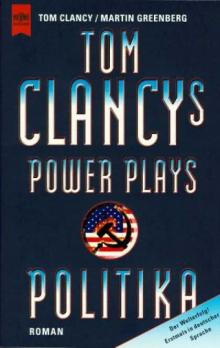 Politika pp-1
Politika pp-1 Rainbow Six jr-9
Rainbow Six jr-9 Tom Clancy's Power Plays 1 - 4
Tom Clancy's Power Plays 1 - 4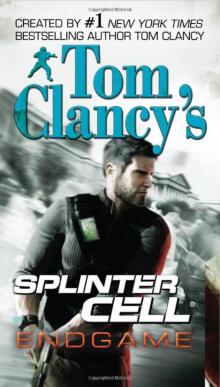 Endgame sc-6
Endgame sc-6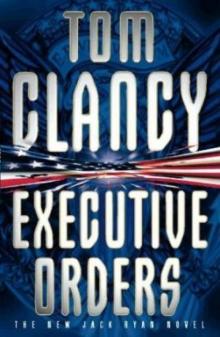 Executive Orders jr-7
Executive Orders jr-7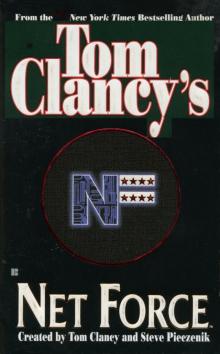 Net Force nf-1
Net Force nf-1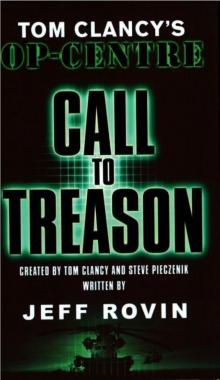 Call to Treason o-11
Call to Treason o-11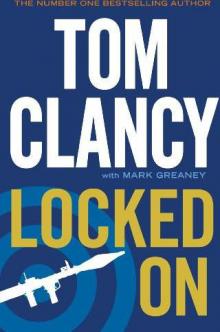 Locked On jrj-3
Locked On jrj-3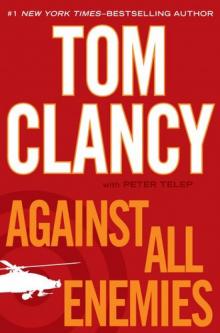 Against All Enemies
Against All Enemies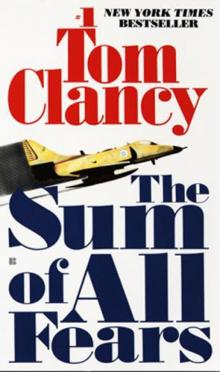 The Sum of All Fears jr-7
The Sum of All Fears jr-7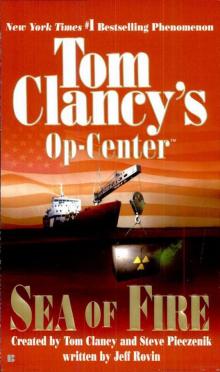 Sea of Fire o-10
Sea of Fire o-10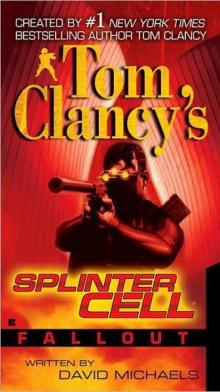 Fallout sc-4
Fallout sc-4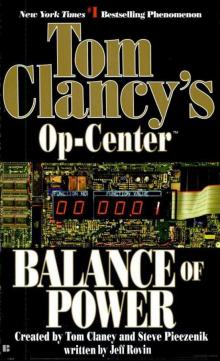 Balance of Power o-5
Balance of Power o-5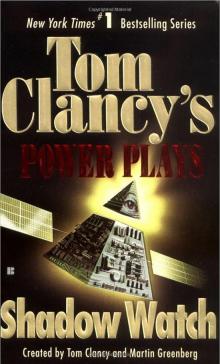 Shadow Watch pp-3
Shadow Watch pp-3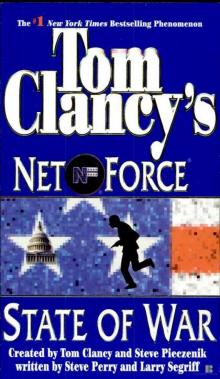 State of War nf-7
State of War nf-7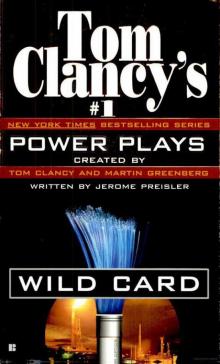 Wild Card pp-8
Wild Card pp-8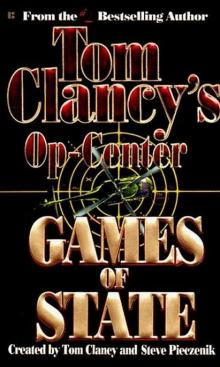 Games of State o-3
Games of State o-3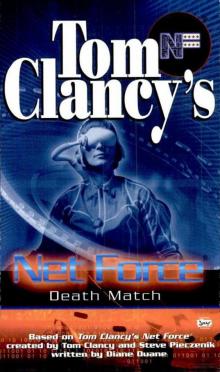 Death Match nfe-18
Death Match nfe-18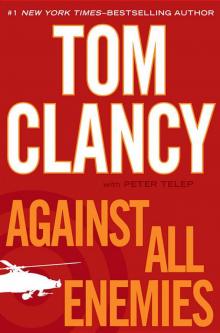 Against All Enemies mm-1
Against All Enemies mm-1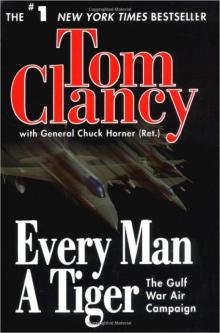 Every Man a Tiger: The Gulf War Air Campaign sic-2
Every Man a Tiger: The Gulf War Air Campaign sic-2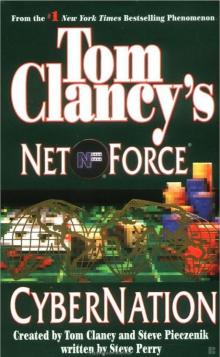 Cybernation nf-6
Cybernation nf-6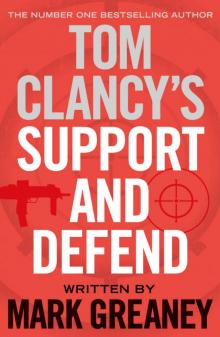 Support and Defend
Support and Defend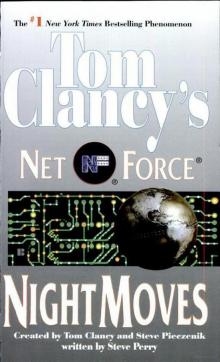 Night Moves nf-3
Night Moves nf-3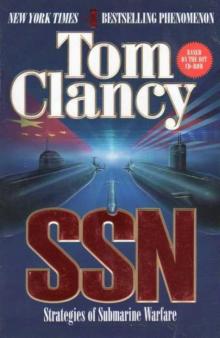 SSN
SSN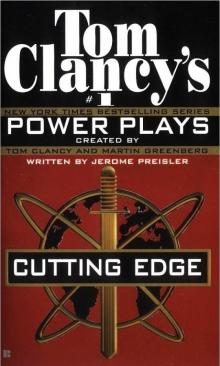 Cutting Edge pp-6
Cutting Edge pp-6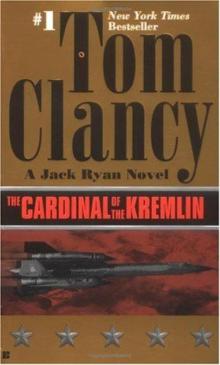 The Cardinal of the Kremlin jrao-5
The Cardinal of the Kremlin jrao-5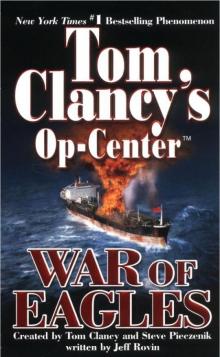 War of Eagles o-12
War of Eagles o-12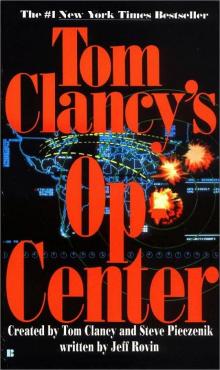 Op-Center o-1
Op-Center o-1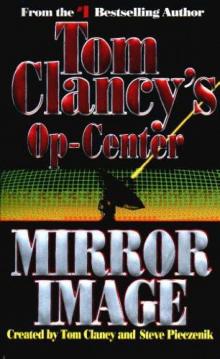 Mirror Image o-2
Mirror Image o-2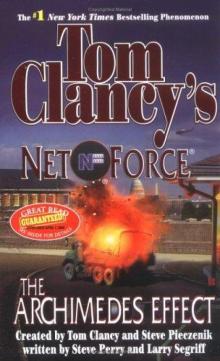 The Archimedes Effect nf-10
The Archimedes Effect nf-10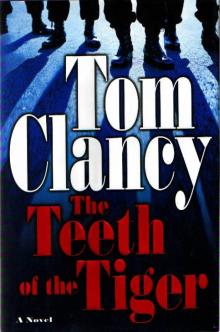 Teeth of the Tiger jrj-1
Teeth of the Tiger jrj-1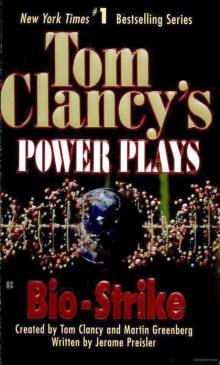 Bio-Strike pp-4
Bio-Strike pp-4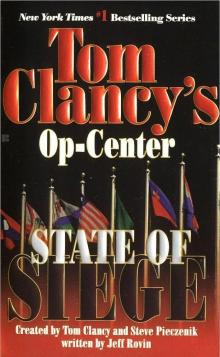 State of Siege o-6
State of Siege o-6 Debt of Honor jr-6
Debt of Honor jr-6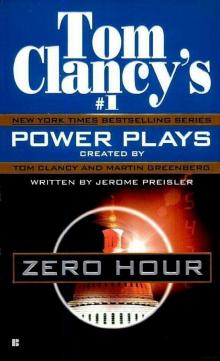 Zero Hour pp-7
Zero Hour pp-7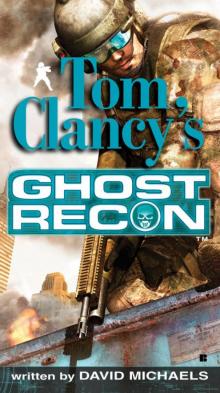 Ghost Recon gr-1
Ghost Recon gr-1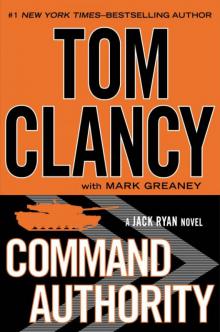 Command Authority jr-10
Command Authority jr-10 Tom Clancy's Power Plays 5 - 8
Tom Clancy's Power Plays 5 - 8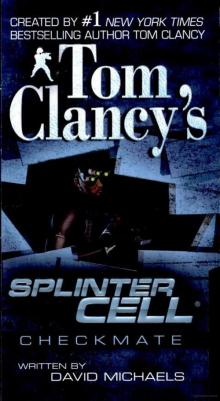 Checkmate sc-3
Checkmate sc-3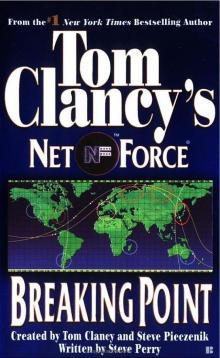 Breaking Point nf-4
Breaking Point nf-4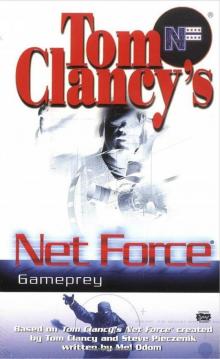 Gameprey nfe-11
Gameprey nfe-11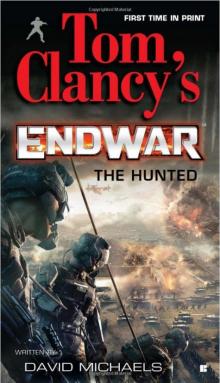 The Hunted e-2
The Hunted e-2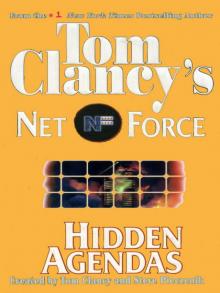 Hidden Agendas
Hidden Agendas Divide and Conquer o-7
Divide and Conquer o-7